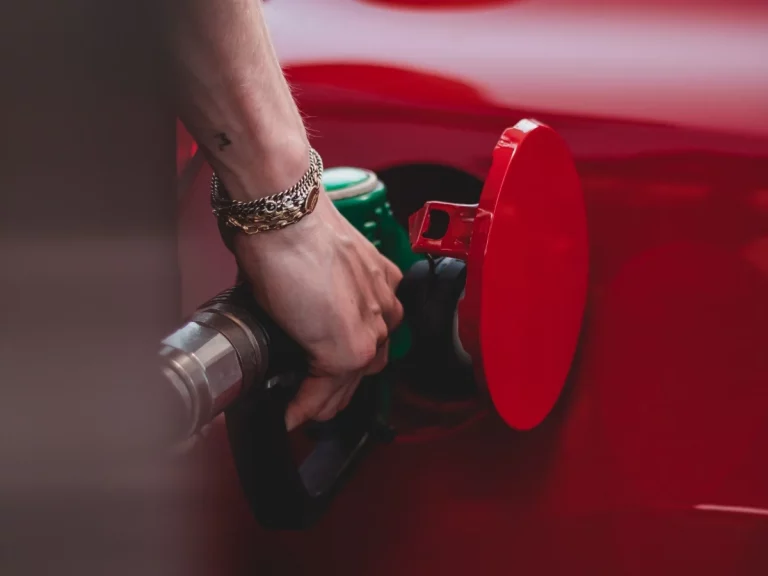What Does Yield Mean In Driving?
Safe driving involves following road signs and rules, with “yield” being a term that comes up often. It’s important for all drivers to know what it means to yield while on the road. Today we will will explain the concept of yielding and why it’s crucial for preventing accidents and keeping traffic flowing. By learning about this essential driving rule, you can make sure your driving is safer for you and everyone else on the road. Let’s find out the role of yielding in everyday driving scenarios.

What Does Yield Mean In Driving?
In driving, yielding means giving the right of way to other vehicles or pedestrians when approaching an intersection or another potential conflict zone. It essentially means you slow down or stop if necessary to allow others to proceed safely.
Here’s a breakdown of yielding:
- Not a complete stop: Unlike a stop sign, where you must come to a complete halt, a yield sign requires you to slow down and check for oncoming traffic. You only need to stop completely if there’s another vehicle or pedestrian in the way that you need to yield to.
- Prepare to stop: When you see a yield sign, approach the intersection with caution and be prepared to stop if needed. This might involve slowing down significantly and assessing the situation before proceeding.
- Look for other vehicles and pedestrians: Yielding applies to all traffic, including cars, motorcycles, bicycles, and pedestrians in crosswalks. Make sure the way is clear before entering the intersection or merging into traffic.
Here are some situations where you might encounter a yield sign:
- At an intersection where a minor road meets a major road
- When merging onto a highway from an on-ramp
- At a yield crosswalk, where pedestrians have the right of way
Yielding is a crucial safe driving practice. It ensures a smooth flow of traffic and helps prevent accidents by avoiding collisions with those who have the right of way.
Characteristics of Yield Signs
Yield signs play a crucial role in traffic management by indicating where drivers need to give right-of-way to other road users. Here are the key characteristics of yield signs:

-
Shape and Color: Yield signs are easily recognizable by their inverted triangle shape and are typically red and white. This distinct design helps drivers quickly identify them among other road signs.
-
Placement: They are placed at intersections, roundabouts, and where lanes merge to alert drivers that they need to be prepared to stop and give way to others.
-
Message: The sign carries the word “YIELD” or, in some regions, “GIVE WAY,” clearly communicating the action drivers must take upon encountering the sign.
-
Action Required: Upon seeing a yield sign, drivers should slow down, check for any oncoming traffic, pedestrians, or cyclists, and stop if necessary to allow others the right-of-way before proceeding.
-
Flexibility: Yield signs offer a flexible approach to traffic flow, as they require drivers to use judgment to decide when it’s safe to proceed, unlike stop signs that mandate a complete stop regardless of traffic conditions.
-
Safety: The primary goal of yield signs is to enhance safety by reducing potential points of conflict between different road users and to smooth the flow of traffic at intersections or merge points.
-
Legal Obligation: Yielding when indicated by a yield sign is not optional; it’s a legal requirement. Failing to obey a yield sign can lead to traffic citations and increase the risk of accidents.
| Yield Sign Facts | Data |
|---|---|
| Shape | Triangular |
| Color | Red and white |
| Purpose | To yield right of way |
What Are the Rules for Yield Sign?
Here are the key rules for following a yield sign:
1. Slow Down and Prepare to Stop:
- A yield sign doesn’t mandate a complete stop, but it does require you to slow down considerably. The exact speed reduction depends on the situation but should allow you to stop safely if needed.
- Be prepared to come to a complete halt if there’s oncoming traffic, pedestrians, or other vehicles already in the intersection or area you’re yielding to.
2. Yield the Right of Way:
The core principle of a yield sign is to give the right of way to others. This applies to all traffic, including:
- Vehicles on the main road you’re approaching at an intersection.
- Traffic already in the lane you’re trying to merge onto (e.g., highway on-ramp).
- Pedestrians in a crosswalk, especially those with a marked yield crosswalk.
3. Look for Other Traffic and Pedestrians:
Don’t just rely on slowing down. Actively scan for oncoming traffic and pedestrians before proceeding. This includes checking left, right, and for any potential blind spots.
4. Proceed Only When Safe:
The key to following a yield sign is to only enter the intersection or merge into traffic when it’s safe to do so. Don’t force your way in if there’s a vehicle or pedestrian you need to yield to. Wait for a clear opening to avoid causing an accident.
Yield Signs vs. Stop Signs
Yield signs and stop signs are both traffic control devices, but they have distinct meanings and require different actions from drivers. Here’s a breakdown of their key differences:

Right of Way:
- Stop Sign: A stop sign demands a complete stop. You must come to a complete halt before proceeding, even if there are no other vehicles or pedestrians visible. You only regain the right of way after coming to a complete stop and ensuring it’s safe to proceed.
- Yield Sign: A yield sign indicates you must slow down and yield the right of way to any oncoming traffic or pedestrians already in the intersection or area you’re entering. If the way is clear, you can proceed without stopping.
Complete Stop vs. Slow Down:
- Stop Sign: A complete stop is mandatory. You must come to a complete stop and ensure there’s no conflicting traffic before proceeding.
- Yield Sign: A complete stop is not required unless there’s another vehicle or pedestrian you need to yield to. You can proceed with caution after slowing down and checking for potential conflicts.
Visibility:
- Stop Sign: Stop signs are typically octagonal with a red background and white lettering. This bold design ensures high visibility, emphasizing the need for a complete stop.
- Yield Sign: Yield signs are triangular with a red border and white interior with the word “YIELD” written in red. While still noticeable, they are less visually demanding than stop signs, reflecting the possibility of proceeding without stopping.
Common Scenarios:
- Stop Signs: Stop signs are typically placed at four-way intersections with equal priority roads or at locations with limited visibility (e.g., blind corners).
- Yield Signs: Yield signs are commonly found at:
- Merging lanes from on-ramps to highways.
- Minor roads meeting major roads.
- Yield crosswalks for pedestrians.
Are Yield Signs the Same Around the World?
Yield signs may vary across different countries, with distinct designs and wording used to convey the same message. Here are a few examples of how Yield signs differ globally:

- Design Variations: Countries like Finland, Greece, and Iceland use a red and white vertical triangle, while places like Australia and Papua New Guinea feature a different font and typeface for their Yield signs.
- Text Differences: The wording inside the Yield sign also varies. Some countries, such as the United Kingdom and Bhutan, use “Give Way,” while others like Nigeria and Singapore opt for “Yield” or “Give Way.”
- Color Combinations: From red and white to red and yellow versions, the color schemes of Yield signs can differ based on the region, like in Kuwait or Vietnam.
Frequently Asked Questions
Where are Yield signs typically found on the road?
Yield signs are commonly placed at t-intersections without traffic lights. They are used to regulate traffic flow, instructing drivers to give way to other vehicles approaching the intersection. Failure to yield when required can lead to accidents and traffic congestion.
Are pedestrians always given the right of way?
Pedestrians are entitled to the right of way at intersections and crosswalks, and drivers must yield to them. Bicycles, classified as vehicles, do not always have the right of way and must follow the same rules as other drivers. Yielding to pedestrians promotes road safety.
Is yielding always mandatory for drivers?
Drivers are generally required to yield to pedestrians at crosswalks and intersections for pedestrian safety. It is crucial to be vigilant and observant of pedestrians crossing the road, stopping the vehicle when necessary to allow them to pass safely. Prioritizing pedestrian right of way enhances road safety for all users.

Hi! I’m Larry Gibbs, studying mechanical engineering with a focus on cars. I really love Ferraris and write blog posts about the latest car stuff. When not studying or blogging, I’m usually on a road trip exploring new places. I also enjoy playing football and watching movies. Life’s an adventure, and I’m all about enjoying the ride!






